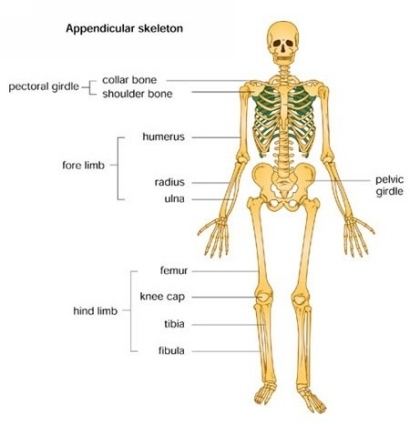Cards In This Set
| Front | Back |
|
Adipocere
|
 Is a wax- like organic substance formed by bacteria eating away at our body saturating our fatty tissue and transforming it into this. It occurs with in a month of death and in moist burial places protected from oxygen or underwater. |
|
Alvar
|
Chemical used after the residual maceration of the body step is taken during the initial treatment of the body prior to Identification. This chemical helps stabilize the bones to give it a touch surface.
|
|
Autolysis
|
Occurs after death where the digestive enzymes that were once kept under lock and key are now released when the cells begin to die they then begin to eat away the body tissue. Which simply can be clarified as the Self- destruction of cells or tissue within the body.
|
|
Axial Skeleton
|
Memorize the parts
|
|
Appendicular skeleton
|
 Memorize the parts |
|
Body Farm
|
It was the first ever of its kind to study the influence the environment had on the decomposition of the human body. Its purpose is to be able to research how certain settings change the decomposition of the body.
|
|
Chain of Evidence
|
The chain of evidence is to ensure that the forensic's findings would in no way be tampered. This chain of evidence process includes the flowing; Inventory of all the material found, log of everyone who handled the evidence, and finally the record that describes the recovery process ( The documentation that verifies that the body had not be contaminated)
|
|
Compact vs. Cancellous bone
|
Compact bone makes up 80% of the human skeleton it is the dense and smooth exterior part of the bone. The interior part of the bone used to support and to reinforce the bone without adding weight is called the cancellous bone.
|
|
Dale Stewart
|
He used collections to formulate standards for determining the age of the bones from the skeletal material. He was a founder of modern forensic anthropology.
|
|
Datum point
|
A point which serves as a reference for archeologist to use. Any object that will not be moved and can be used as a reference to creating a grid. One in the 4 parts of the recovery of the human remains its under mapping.
|
|
Desiccation
|
Extreme dryness of the body that creates very good preservation
|
|
Diaphysis
|
The shaft of the long bone.
|
|
Ephiphyses
|
The rounded end of a long bone
|



